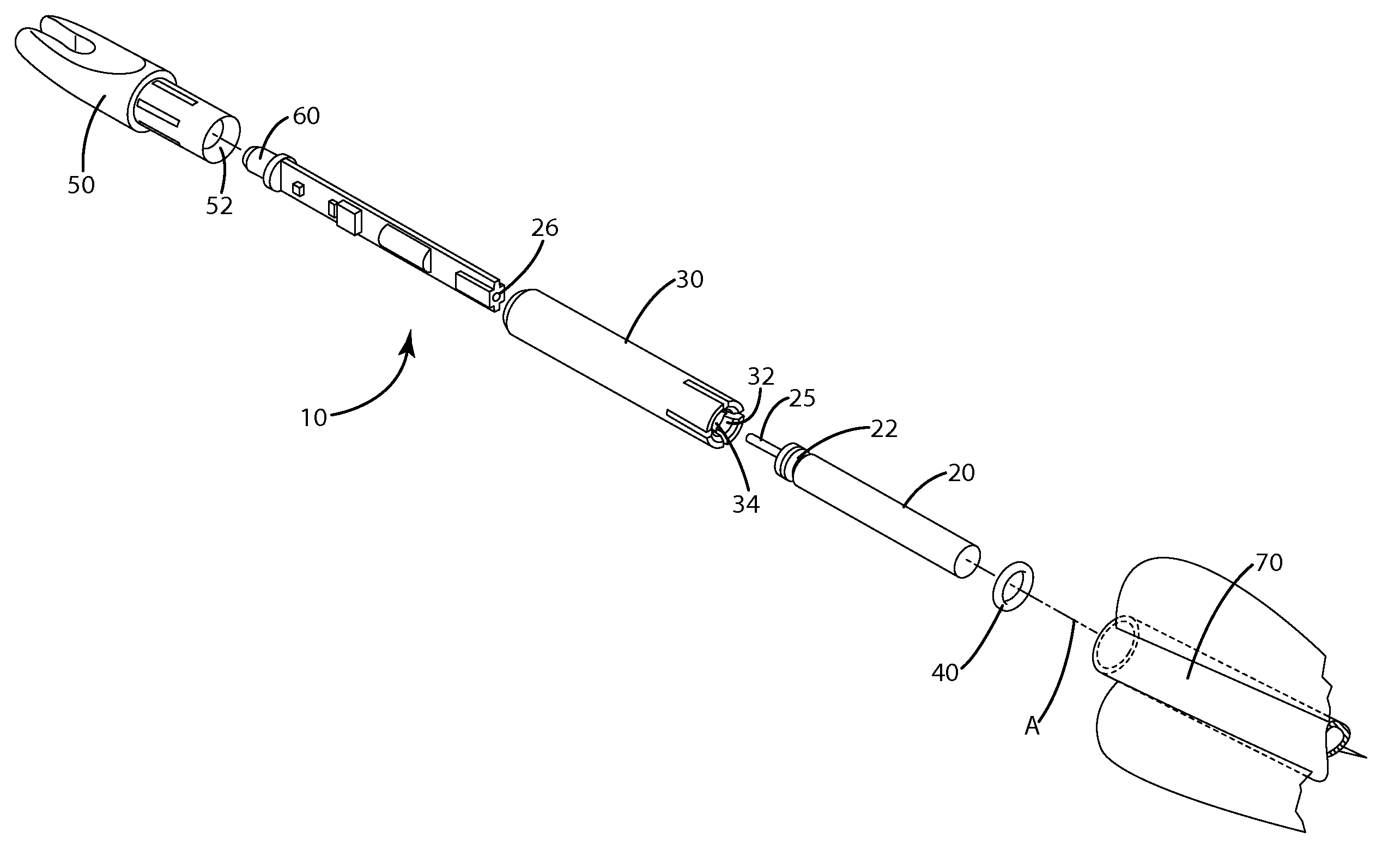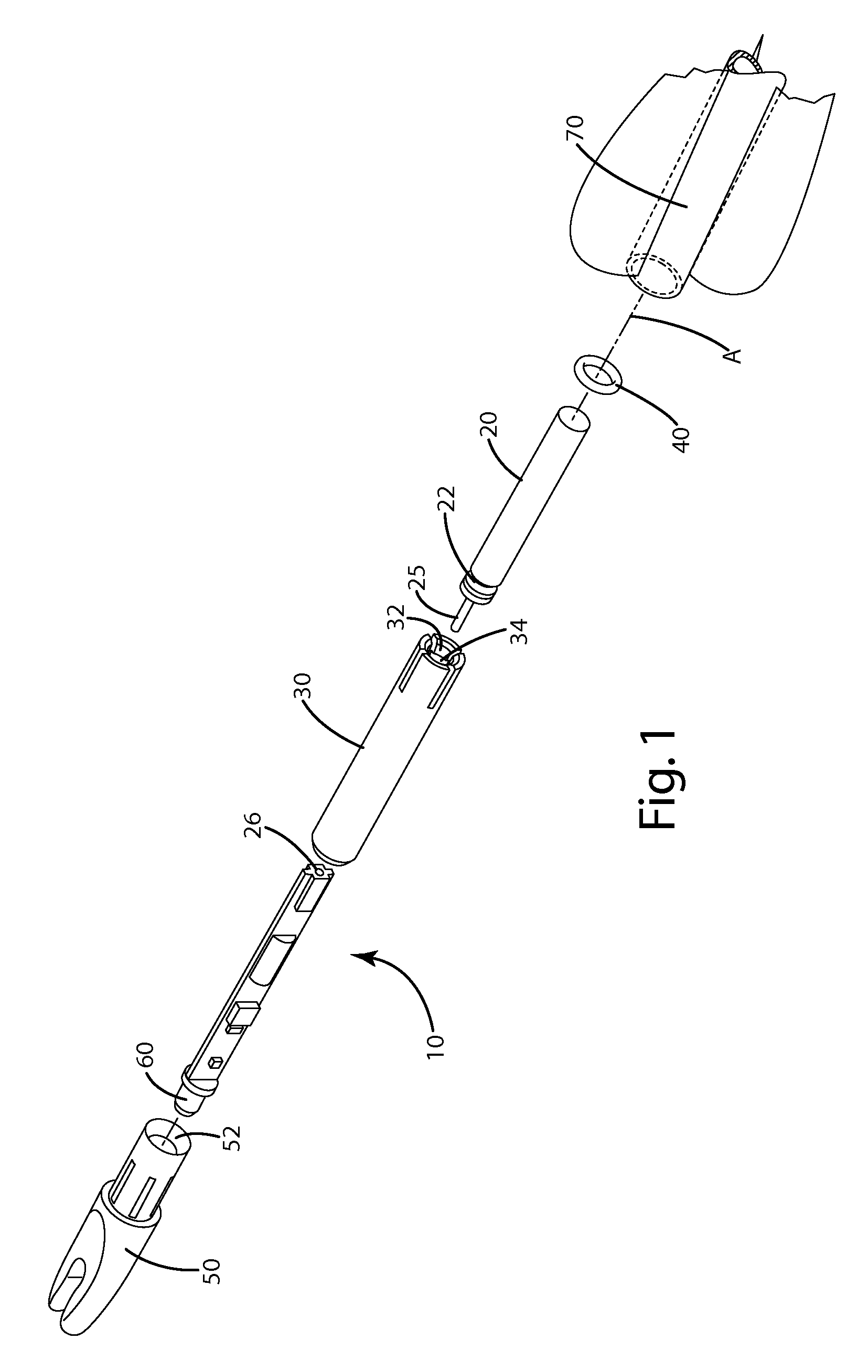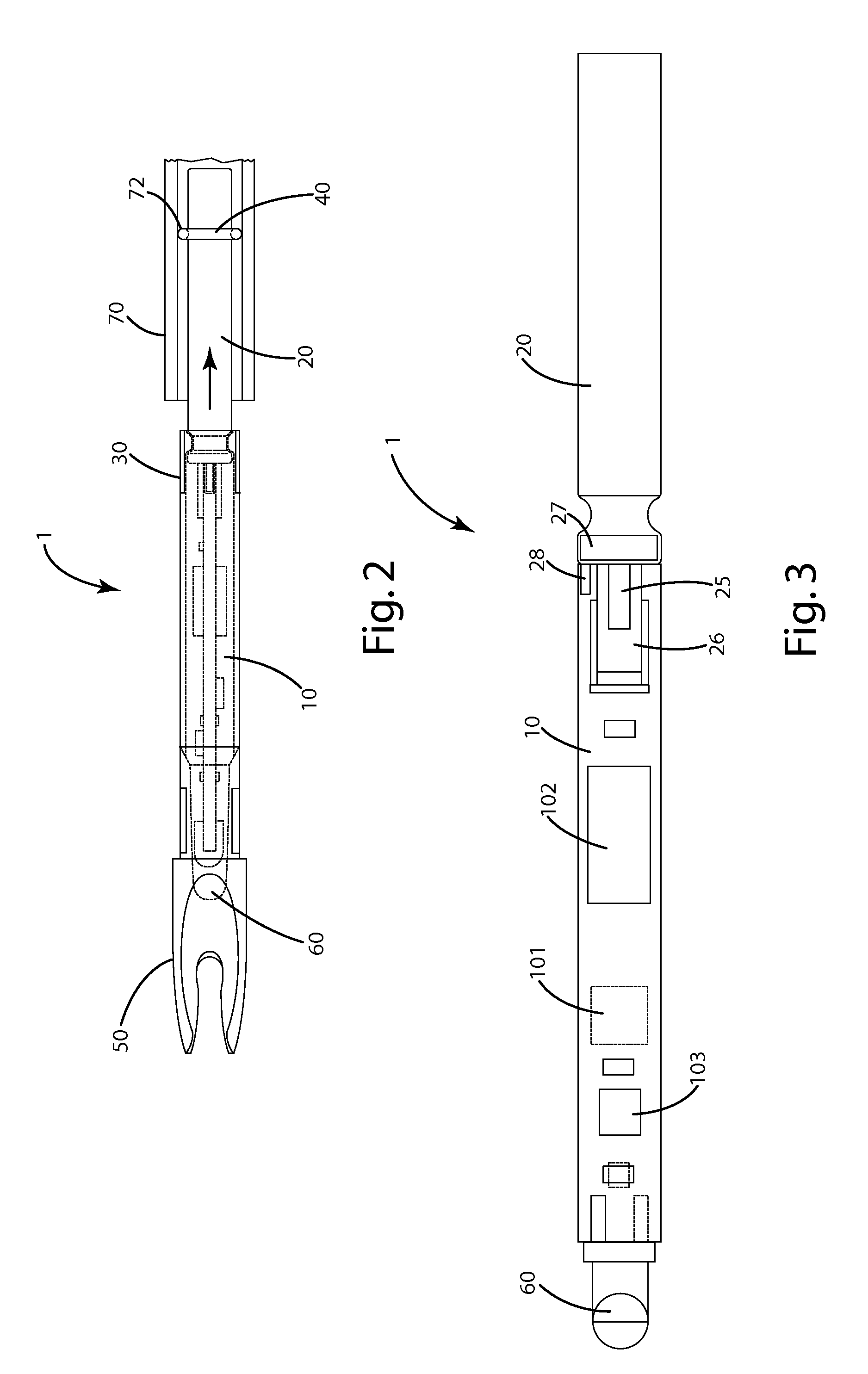Lighted archery nock with variable light emissions
a variable light emission and archery technology, applied in the field of archery arrow nocks, can solve the problems of inability to trace the flight of an arrow in low light conditions, such as those found at dawn and dusk, difficult and often impossible, and the light may soon de-power, so as to prevent blind spotting, minimize battery drain, and save battery life
- Summary
- Abstract
- Description
- Claims
- Application Information
AI Technical Summary
Benefits of technology
Problems solved by technology
Method used
Image
Examples
Embodiment Construction
[0028]Referring to FIGS. 1 and 2, components of one embodiment of the present invention can be aligned along the axis A, the longitudinal axis of the arrow 70. There, the nock assembly 1 generally includes a housing 30, which secures or houses the circuit board 10. In alternative embodiments, the housing 30 may secure or house the arrow nock 50 in addition to or in lieu of the circuit board. The nock 50 can be constructed from a polymer, such as polycarbonate, metals, or any other materials as desired. The nock can also be translucent or transparent so that light produced by the light 60 can be transmitted therethrough. The nock 50 can further define a bore 52 into which the light 60 is fitted. In alternative embodiments, the light 60 may be positioned elsewhere on or in the nock assembly 1.
[0029]In the current embodiment, the contacts or terminals of the replaceable battery and the circuit board are axially configured. One contact 25 of the replaceable battery 20, which can be in t...
PUM
 Login to View More
Login to View More Abstract
Description
Claims
Application Information
 Login to View More
Login to View More - R&D
- Intellectual Property
- Life Sciences
- Materials
- Tech Scout
- Unparalleled Data Quality
- Higher Quality Content
- 60% Fewer Hallucinations
Browse by: Latest US Patents, China's latest patents, Technical Efficacy Thesaurus, Application Domain, Technology Topic, Popular Technical Reports.
© 2025 PatSnap. All rights reserved.Legal|Privacy policy|Modern Slavery Act Transparency Statement|Sitemap|About US| Contact US: help@patsnap.com



